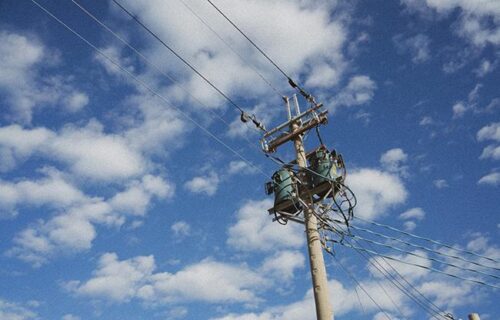Electricity is supplied to the capital city of Prague mainly from three main substations – Chodov, Reporyje and Malešice. They are interconnected, so a larger outage can be replaced by electricity from the remaining substations within a few tens of minutes. The spokesperson of Prague Energy (PRE) Karel Hanzelka and Petr Holubec said today. This morning, Prague was hit by a massive power outage caused by a technical fault in the substation in Chodov. According to PRE, the outage affected up to a quarter of electricity customers in the metropolis, ie about 200,000 customers.
“In the event of an outage, we have a so-called automatic shutdown in some locations, especially in the city center, when there is a switch to another substation in a matter of seconds. “The outage can be replaced quickly, it was possible to see it yesterday. It was in the order of tens of minutes,” Hanzelka said.
Electricity comes to Prague from four basic directions identical to the world’s sides, namely through the lines of the superior energy system owned by ČEPS from power plants. Electricity goes to Prague from the Mělník power plant, from Dukovany, Chvaletice, Temelín, the Vltava cascade and power plants in northern Bohemia.
The voltage in the main substations changes from 400 kV to 110 kV. Parts of the 110 kV substations are already owned by PREdistribution, ie a subsidiary of PRE. These substations send 110 kV to others, where they change to 22 kV, such as the Holešovice, Pražačka, Černý Most, Smíchov, Pankrác, Červený Vrch, Prague – Střed, Karlín, Karlov or Běchovice substations. From these substations, the voltage of 22 kV goes to the distribution transformer stations, of which there are more than 3,000 in Prague and from these distribution transformer stations, only 400 V goes to the individual buildings.
Yesterday’s outage was part of the superior system, ie the 400 kV Chodov substation, which belongs to ČEPS. Subsequently, smaller 110 and 22 kV substations were left without electricity, for example in Bohdalec, Chodov or the Střed substation. “Dispatchers automatically started sending electricity remotely from those places where we had it from other sources, to an area that was left without electricity due to a blackout,” said Holubec.
Switching and handling takes tens of minutes, all technical options must be checked and possible risk routes eliminated. “But as it turned out even today, everything from other directions should be energized within an hour. In Prague, we are able to deal with a major outage of two entry points into the city, with the fact that it also depends on the season and the city’s electricity requirements. In the winter, it would be more complicated and on the edge than, for example, now, due to the expected higher consumption,” Holubec added.
ČEPS stated that already in the framework of the preparation of the operation, it is expected that in the event of a failure of one or more transformers in the substation, there is sufficient capacity in the neighboring substations to resume supplies. “The speed of this recovery is very different, in some simpler cases it is units of minutes. In more complicated situations requiring a higher level of distribution company dispatcher, it can take tens of minutes to gradually switch supplies to neighboring substations, as was the case with yesterday’s breakdown,” said ČEPS spokesman Lukáš Hrabal.
Some substations operate in parallel and, in the event of a failure of one transformer, the other transformers will take over the load without interrupting supplies. ČEPS closely coordinates this operational planning with distribution system operators.
Source: CTK
